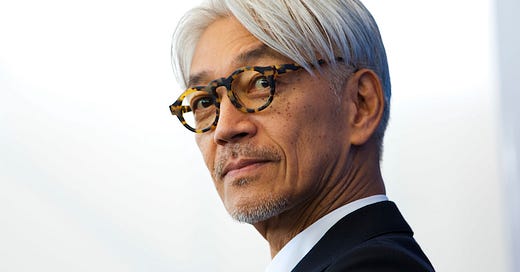Se parliamo però di autori, i miei idoli sono Bernard Herrmann, Alex North, Nino Rota, Leonard Rosenman, Toru Takemitsu, Georges Delerue, Ennio Morricone, Lim Giong e Cliff Martinez
Se fossi un architetto, sarei un pessimo architetto, perché non mi piace avere progetti. Naturalmente, senza progetti, nessuno sa come sarà l’edificio. Ma è esattamente quell…
Keep reading with a 7-day free trial
Subscribe to (((RADIO PIAN PIANO))) to keep reading this post and get 7 days of free access to the full post archives.



